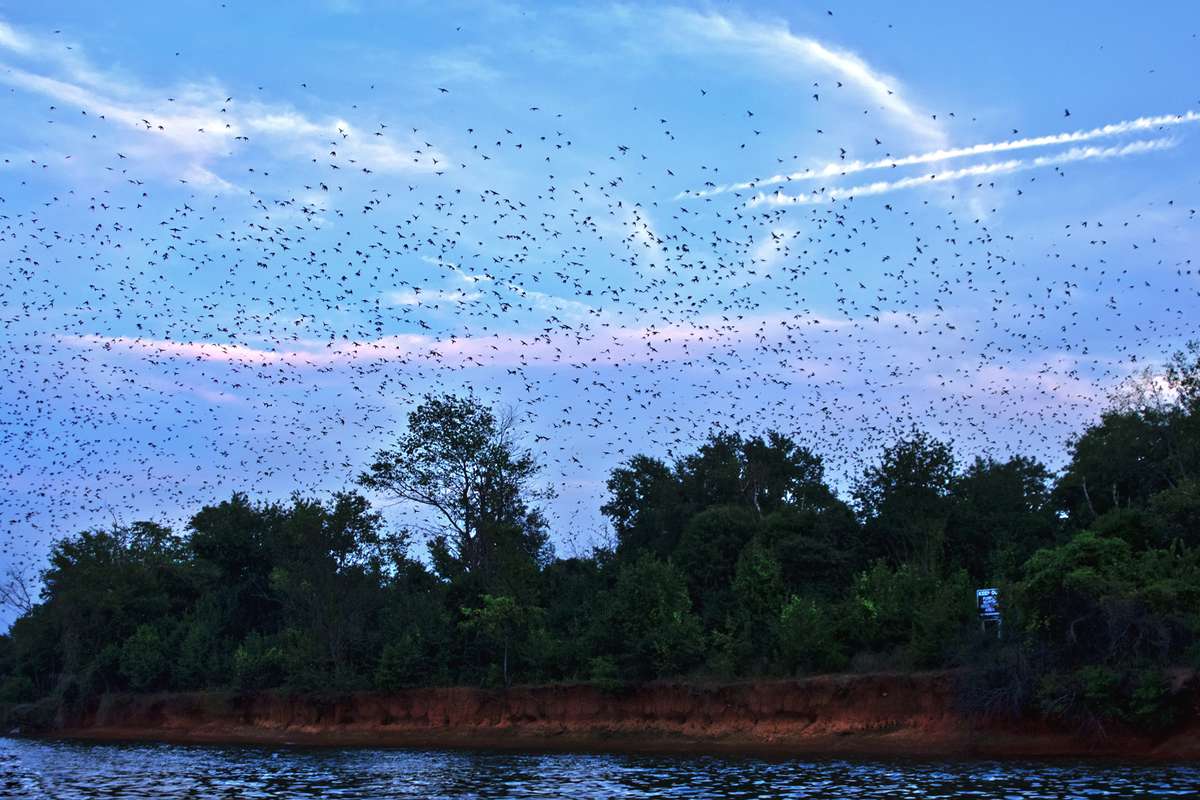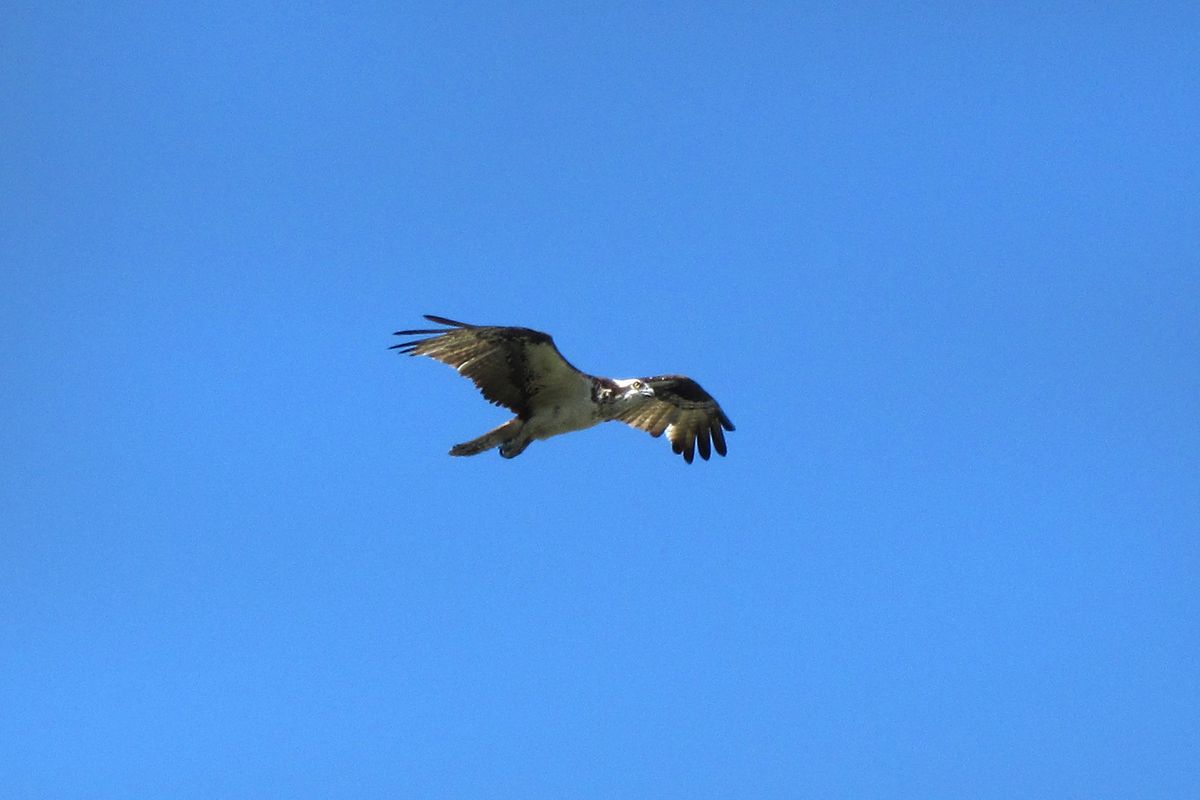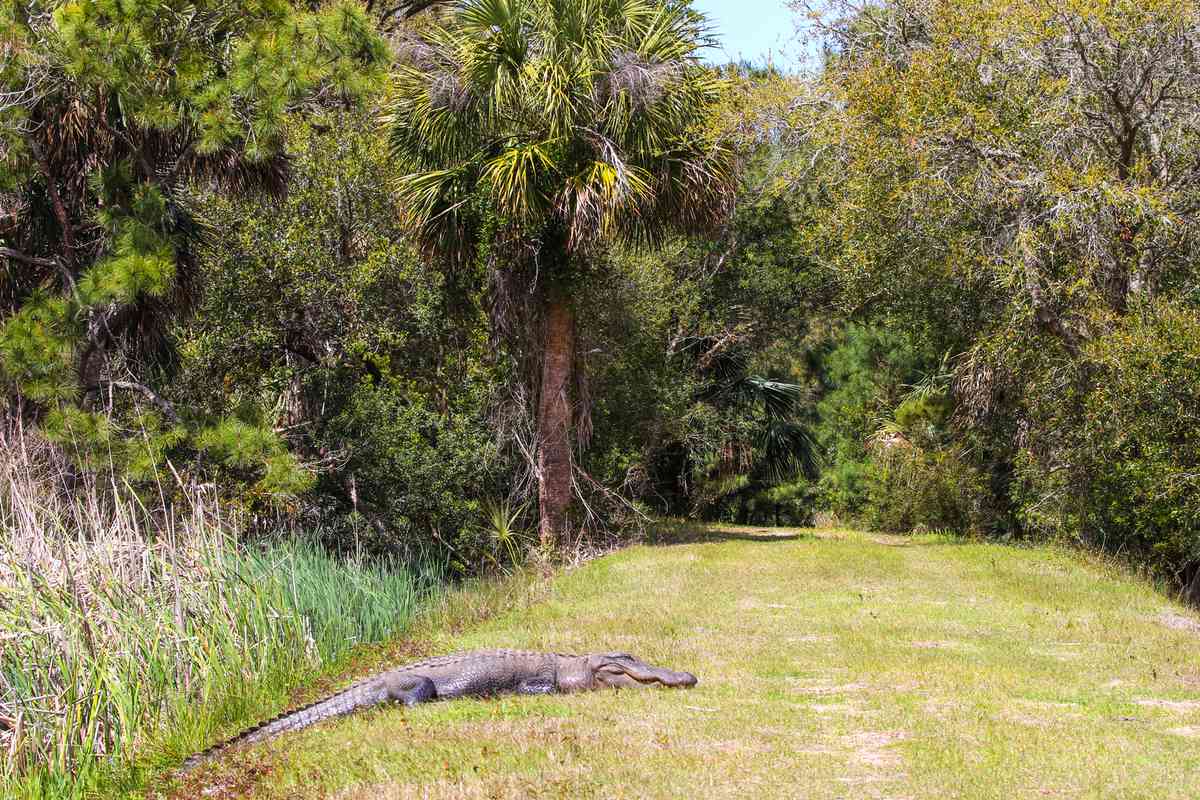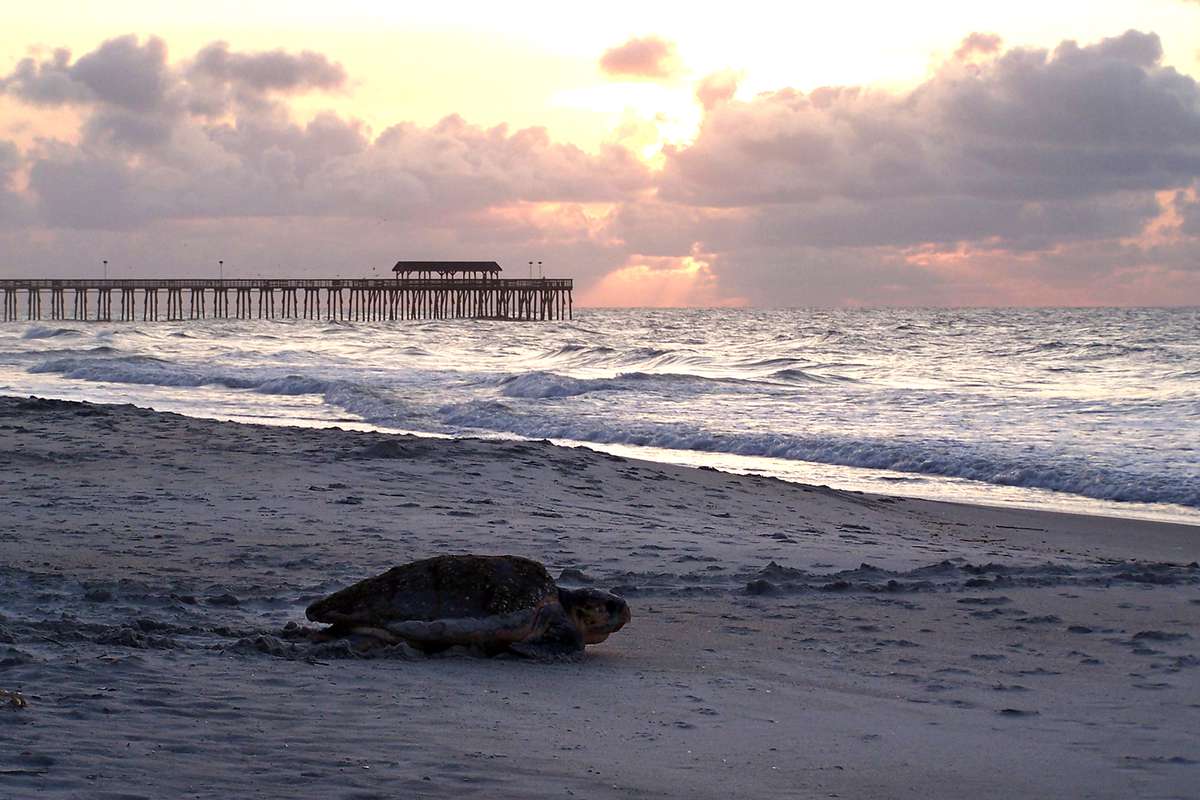Travel+Leisure. February 2021.
The state of South Carolina is home to a variety of landscapes, from steep mountains and salty marshes to cypress forests and sandy beaches. It has many species of birds, nocturnal mammals, and marine life.
It is important to be an informed traveler in the natural world. Travel with a naturalist who can best identify birds and animals, creating a more enriching and safe experience for everyone involved. Exercise caution when walking close to ponds or along water’s edges. Download an app to track the ocean tides as this gives better insight to when coastal marine life is most active. Lastly, remember that it is illegal to feed the wildlife.
Congaree National Park

CREDIT: BRETT FLASHNICK/EXPERIENCE COLUMBIA SC
Congaree National Park is located near the state capital of Columbia in central South Carolina, and is one of the highest temperate deciduous forest canopies remaining in the world. The best wildlife spotting opportunities inside the park come while hiking through the many trails and boardwalks along its hardwood forests, or canoeing or kayaking through the swamps. You can potentially see bobcats, deer, feral pigs, feral dogs, coyotes, armadillos, turkeys, and otters on land, as well as turtles, snakes, and alligators in its waters.
The UNESCO biosphere reserve is an important bird area and one of the best places in the world to see fireflies. During May and June every summer, watch a spectacular firefly synchronization, where hundreds of Phontinus frontalis blink in unison as part of their mating ritual. The natural phenomenon occurs for about two to three weeks and is free to watch at Congaree.
Lake Murray

CREDIT: COURTESY OF CAPITAL CITY LAKE MURRAY COUNTRY
Bomb Island on Lake Murray in central South Carolina is the largest roosting site for Purple Martins in North America. The only way to get there is by boat as the island is located in the middle of the lake.
Pinckney Island National Wildlife Refuge

Pinckney Island National Wildlife Refuge is an important link in the chain of wildlife refuges along the Atlantic Flyway, attracting thousands of migratory birds and wading birds annually. Located near Hilton Head Island in Beaufort County, South Carolina, Pinckney offers excellent birding viewing opportunities to visitors. The island’s freshwater ponds, salt marshes, and maritime forest attract waterfowl, shorebirds, raptors, neotropical migrants, white ibis, herons, and egrets.
One of the best ways to explore the Refuge is with an expert guide from the nearby Coastal Discovery Museum, who can point out the bird species. The nature tours orient kids and adults to flora and fauna of the Lowcountry while educating them about conservation. Expect to also see alligators, horseshoe crabs, nine-banded armadillo, and many migratory birds during your nature walk.
Caesars Head State Park

Located in the dramatic Blue Ridge Escarpment on the border of Georgia and South Carolina, Caesars Head State Park is the best place to see the great hawk migration over a canopy of bright fall colors. During three months from September to November, thousands of hawks soar over the park. The hawks catch thermal winds through the Appalachian Flyway that propel them into the air without having to flap their wings.
The best way to see the birds is by hiking through Raven Cliff Falls trail in South Carolina’s mountains. Reach a dramatic overlook from where you can get panoramic views of the 420-foot falls, pristine southern mountain forest, and the mountain cove below.
Cape Romain National Wildlife Refuge

CREDIT: DANIELA DUNCAN/GETTY IMAGES
South Carolina’s coastline is home to a significant population of bottlenose dolphins and you can watch them up close by embarking on a dolphin watching boat tour. Dolphins live in the ocean, marshes, rivers, and estuaries and are most active at daybreak.
A good place to spot the dolphins is on a guided ecotour to Cape Romain National Wildlife Refuge near Charleston. Cape Romain is also home to a large population of nesting loggerhead sea turtles, bald eagles, and over 293 bird species.
The passenger ferry takes you from Charleston to Bulls Island, where you can easily spend the day out in nature. The seven miles of Bulls Island’s beach are part of the longest stretch of undeveloped coastline on the East Coast.
Myrtle Beach State Park

CREDIT: SCPRT/PHOTO BY LEE WILSON
Between May and August, expect to find loggerhead turtles nest along the coast of South Carolina, all the way from Myrtle Beach in the north to Hilton Head Island in the south. The females lay eggs near sand dunes and wait around 60 days for the offspring to hatch and make their way back into the ocean.
There are many local turtle conservationist groups that monitor the beaches, barricading the nests to protect from predators, imposing light ordinances, and educating kids about sea turtles. At Myrtle Beach State Park, go on a sea patrol with a ranger, help clean up the public beach, smash sandcastles, and clear out paths for the turtle hatchlings.
~ Written for and published by Travel+Leisure. All rights reserved.